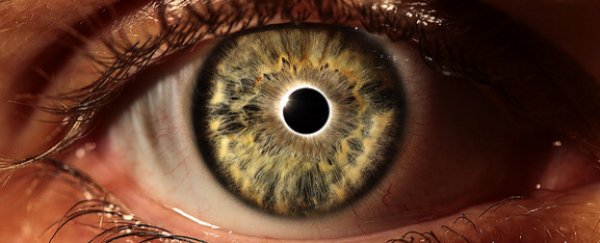Humans are notoriously limited when it comes to eyesight - while we can see all the beautiful colours of the rainbow within our visible spectrum, wavelengths such as X-rays, radio waves and infrared are all invisible to us.
But now scientists have proved that our retina cells can see infrared light waves after all, we just need them to hit our eyes in the right way. The research will now help scientists to better test people's eyesight and potentially even improve it.
The researchers, from Washington University School of Medicine in St Louis, tested cells from retinas of mice and humans using powerful lasers emitting pulses of infrared light. They found that when the light-sensing cells of retinas get a double hit of infrared energy, our eyes are able to detect light that falls outside our visible spectrum.
"We're using what we learned in these experiments to try to develop a new tool that would allow physicians to not only examine the eye but also to stimulate specific parts of the retina to determine whether it's functioning properly," said senior researcher Vladimir J. Kefalov in a press release. "We hope that ultimately this discovery will have some very practical applications."
The results are published in PNAS.
The scientists first became interested in whether our eyes can detect infrared after members of the research team reported seeing occasinal flashes of green light while they were working with an infrared laser. Naturally, they assumed this should be impossible. But it seemed that something about the lasers was allowing them to see the 'invisible' light waves.
They then studied other studies that reported people seeing infrared light, and began to repeat these experiments.
"We experimented with laser pulses of different durations that delivered the same total number of photons, and we found that the shorter the pulse, the more likely it was a person could see it," said Frans Vinberg, who also worked on the project, in the release. "Although the length of time between pulses was so short that it couldn't be noticed by the naked eye, the existence of those pulses was very important in allowing people to see this invisible light."
They worked out that normally when a particle of light, called a photon, hits our eyes, it's absorbed by our retinas. This then creates a molecule called a photopigment, which begins the process of converting light into vision.
When we see things normally, a large number of photopigments absorb a single photon.
But if scientists pack a lot of photons into a short pulse of a laser, it actually makes it possible for two photons to be absorbed at one time by a single photopigment, and the combined energy of thse light particles is enough to activate the pigment to see what is normally is invisible.
"The visible spectrum includes waves of light that are 400-720 nanometres long," explained Kefalov in the release. "But if a pigment molecule in the retina is hit in rapid succession by a pair of photons that are 1,000 nanometres long, those light particles will deliver the same amount of energy as a single hit from a 500-nanometre photon, which is well within the visible spectrum. That's how we are able to see it."
This is the first study to show that the human eye can sense light through this mechanism, and the team hopes they will now be able to shine a pulsing, infrared laser into people's eyes to stumulate parts of the retina and find out more about how our vision works.
Source: EurekAlert
